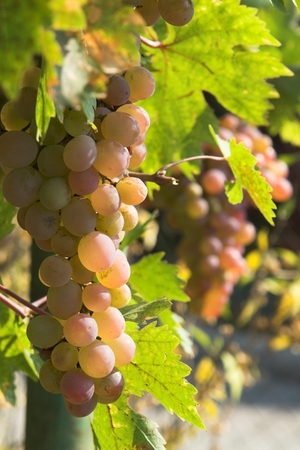White Zinfandel is an inexpensive wine produced almost exclusively in the United States. White Zinfandel is pinkish in color and sweet with low alcohol content. White Zinfandel is what’s called a blush wine in the United States or a rose wine in France. The name “white zinfandel” actually comes from the technique by which the wine is produced. Although white zinfandel is produced from red wine grapes, the skins are removed almost immediately after crushing to prevent the deep red color of traditional red wines. The low alcohol content of white zinfandel has made the wine extremely popular with those who do not regularly drink wine. Although most wine connoisseurs do not take white zinfandel seriously, it is exceedingly popular. In fact, white zinfandel is the third most popular varietal sold in the United States. White Zinfandel can be a great wine for people who are just learning about wine and who have not yet developed a palate capable of discerning the subtleties of more sophisticated (and expensive) wines.
White Zinfandel was first created in 1869 in Lodi, California. Sutter Home vineyards, the first and the most successful producers of white zinfandel, came to produce white zinfandel as a byproduct of their efforts to produce higher quality wines. In order to increase the concentration and alcohol content of their other wines, Sutter Home would remove some of the excess grape juice prior to fermentation, leaving behind more skins. This excess juice was then fermented on its own, the result being white zinfandel. Quite by accident, Sutter Home further refined their process when the yeast in a sample of their white zinfandel died before it could convert all of the sugar in the wine into alcohol. One of Sutter Home’s tasters actually thought the flavor was better in this wine and Sutter Home currently produces its white zinfandel by the same method.
White Zinfandel is often the subject of contempt among serious wine drinkers. One of the reasons for this is that white zinfandel is ready for consumption as soon as it is bottled. Without the aging that comes with other, more prestigious varietals, white zinfandel lacks the subtlety of flavor and scarcity sought after by connoisseurs. However, during the wine boom of the 1980’s, Sutter Home and other white zinfandel producers realized that they could make enormous profits selling white zinfandel in jugs, boxes or as the inexpensive house wine of bars and restaurants. Since none of their attempts to produce a wine of prestige had met with any success, Sutter Home chose to concentrate on white zinfandel.
Soon other white zinfandel producers, otherwise unable to produce a winner in the competitive wine market have found a profitable niche in white zinfandel. Drinkers of quality white zinfandel prefer the wine for informal occasions like barbecues or just sitting on the back porch on a gorgeous summer day. To this market, white zinfandel producers, have geared their product. The overwhelming majority of white zinfandel is produced from California vineyards. In addition to Sutter Home, there are many other producers of note. Ernest and Julio Gallo produce white zinfandel in addition to Beringer Wineries. Barefoot Cellars also produces a popular and fruity white zinfandel. Deloach winery produces a white zinfandel that is more complex and a bit pricier. White Zinfandel can usually be purchased for less than $10 although the most prestigious wines can range up to between $30 and $50.




